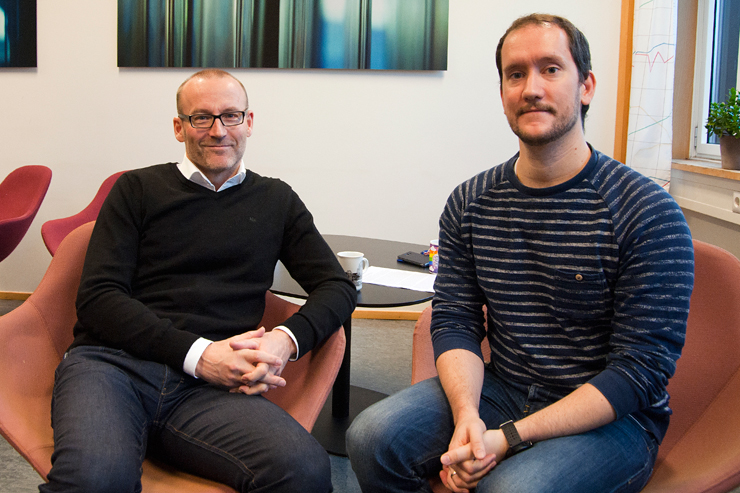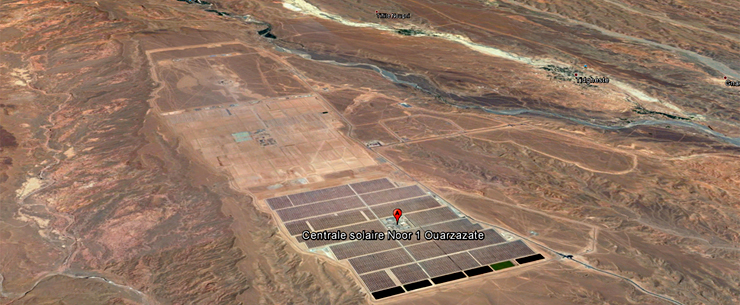Huge oil revenues have long enabled some states in the Middle East to provide heavily subsidized goods and services to their citizens. Saudi Arabia gives generous welfare services to the elderly and the sick, and in Kuwait, lifelong education and health services are provided free of charge. Moreover, Iran, Iraq, Saudi Arabia and Algeria spend from five to eleven per cent of their gross domestic product on subsidizing their citizens’ use of fossil fuels.
However, declining oil revenues may force these states to cut back on these services. This may in turn affect the power that the regimes hold over their populations.
‘Many of the authoritarian regimes in the Middle East make a living from the export revenues from state-controlled petroleum production. A state with huge resources at its disposal may establish a firm ascendancy over its people. It is possible that a transition to renewable energy may pave the way for more democratic regimes,’ says Brynjar Lia, professor at the Department of Culture Studies and Oriental Languages.
With his colleague Jon Nordenson, he has launched the project ‘Climate Change and Energy Transition in the Middle East - Discourse, practice, and state-society relations’, which has been granted early-stage funding from UiO:Energy. The researchers have applied to the Research Council of Norway for project support.

A green transition
A green transition is underway in the Middle East, but what will happen and how fast remains to be seen.
In 2015, Brynjar Lia wrote the blog post ‘A Solar Powered and Electrified Middle East?’ in which he pointed out that this topic has attracted little attention from researchers, despite the widely held view that export revenues from oil production are closely related to authoritarian systems of governance.
In 2012, Saudi Arabia, the world’s largest oil producer, surprised a lot of people by announcing a 109 billion dollar plan for the promotion of renewable energy, setting the goal that solar energy should supply one-third of the country’s electricity by 2032. The project is delayed, but a number of other countries in the region, especially the United Arab Emirates, Morocco, Jordan and Egypt, are pushing ahead to decrease their dependency on fossil fuels. Recently, Algeria also announced a 120 billion dollar programme for renewable energy.
These countries are all different: some are rich oil nations that need to prepare for lower oil revenues in the years to come. Others are net importers of energy and have a lot to gain from becoming more self-sufficient. Both camps have established renewable energy programmes.
Seeing the sun on the horizon
So far, Morocco and Jordan have made the most significant strides. Both of these countries are currently net importers of energy, but this may change.
Tapping the Sun: The Middle East is currently witnessing a tremendous growth in solar energy production. (Brynjar Lia in The New Middle East Blog)
Morocco imports more than 90 per cent of its energy, but the huge Noor Ouarzazate solar energy project, the completion of which is expected in 2019, will supply a major proportion of the country’s electricity needs.

Jordan’s goal is to cover ten per cent of its energy needs from renewable sources by 2020. Six per cent will come from nuclear power. Today, the country imports gas from Israel, which is a politically sensitive issue.
‘By building their own power plants, they gain better control over their energy situation. In addition, the price of solar panels has declined rapidly. For countries that are currently gas importers, it’s probably more profitable to use domestically produced solar energy,’ says Lia, adding that storing and exporting solar energy remain technically challenging.
Egypt is also embracing solar energy. Here, the government opened its first solar power plant in Kuraymat, south of Cairo, in 2011, and a large number of contracts for solar and wind power generation have been signed in recent years. The goal is to cover 20 per cent of Egypt’s electricity from renewable sources by 2022.
Electric cars are coming
Another noticeable development in this area involves electric and hybrid cars. In 2014, more than 300 000 such cars were sold globally, and even though other parts of the world are ahead of the Middle East, things are happening even there.
‘The United Arab Emirates and Jordan subsidize electric cars, and the Turkish government has made it clear that they have no intention of lagging behind in the production of electric vehicle technology,’ Lia tells us.
‘Turkey missed out on classic internal combustion engine technology (...) but electric cars provide us with a new opportunity,’ Fikri Işık, minister of research and technology, stated in 2011. Turkey made an unsuccessful attempt to produce cars in 1961, and now intends to make a renewed effort. This time it will be an electric car, according to the minister.
Noticing climate change
The Middle East can be expected to be hard hit by rising temperatures. The region has already felt the consequences of floods and droughts. Syria experienced many years of drought prior to the outbreak of the uprising, and many moved to the cities as a result. This gave rise to pressure on the labour market and social services, and far more people than before became poor and discontented.
For their part, Tunisia and Egypt suffered from extremely high food prices, especially in 2010, because of drought in China and floods in Russia, two major food exporters. According to Lia and Nordenson, this helped fuel the existing discontent with the regimes in Tunisia and Egypt, but it was not this that triggered the uprisings.
In the years to come, the region can expect more days with extremely high temperatures. In 50 to 100 years, parts of the Middle East that today are populated will have been abandoned.
‘The region is becoming aware of climate change. They can’t remain sitting on the fence in the face of external pressure and the actions taken by the rest of the world,’ says Lia.
The motivation for change
The main motivational force driving the current changes is not concern for the environment, however. For most of the oil states, and Saudi Arabia in particular, the transition is motivated by rapid growth in domestic energy consumption and high and scarcely sustainable subsidies for fossil fuels.
The increasing need for energy must be supplied from other energy sources, if the country is not to lose its position as a dominant oil exporter.
For the energy-importing countries, the motivation is partly linked to energy security. In some cases, we can also observe renewable energy programmes at the local level, where the electricity supply has been disrupted because of war. In Gaza, a number of entrepreneurs have manufactured their own cars with solar panels on the roof. Petrol is expensive, spare parts are difficult to obtain, and such conditions call for local inventiveness.
Weighty questions, few studies
In the project, the researchers will study various aspects of the green transition in the Middle East. For example, they will investigate whether a green transition enjoys support among the general population.
‘How are people discussing this? What words and expressions are they using? Is the programme fronted by activists or by the government? We know that there are differences between the countries in this regard. The United Arab Emirates, for example, use this to showcase themselves with the construction of the climate-neutral town of Masdar. But there, we see no particular enthusiasm among people in general,’ Jon Nordenson explains.
A green transition in the Middle East may have a significant impact on the rest of the world, he points out.
‘The Middle Eastern countries possess most of the world’s oil and gas resources, and events there may potentially have a huge impact on other countries. And conversely, changes in the international energy market may have large repercussions for the Middle Eastern countries. In the long term, there may be too few buyers of oil and gas.’
Jon Nordenson and Brynjar Lia believe that the project will highlight an important topic that until now has been not widely studied.
‘What is happening in terms of environmental policy in the Middle East is extremely important, but it has been overshadowed by the genocidal war in Syria. Energy policy would have attracted far more attention if the region hadn’t been ravaged by civil war, terror and enormous humanitarian tragedies,’ Brynjar Lia concludes.
GreenMENA: Climate Change and Energy Transition in the Middle East
Read more about research on the Middle East:
